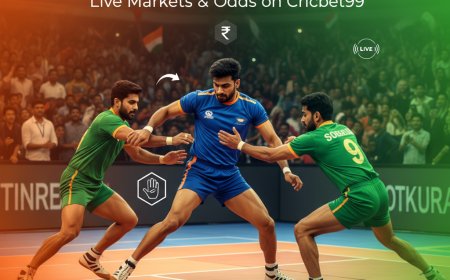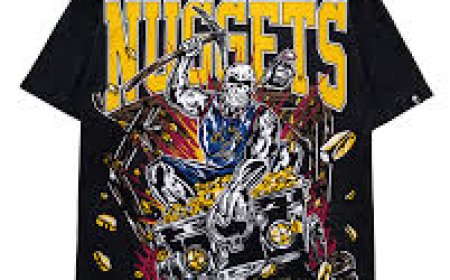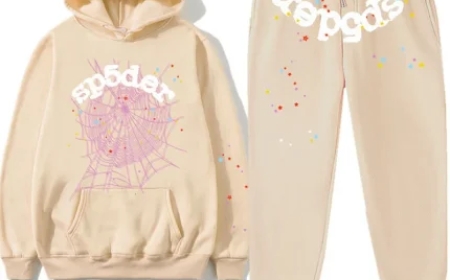Why Comme des Garçons Is Dominating Gen Z Fashion
Explore why Gen Z connects deeply with Comme des Garçons—through anti-fashion, gender fluidity, rebellion, subversive style, and raw authenticity.

In an era of digital noise, fast fashion, and recycled trends, Gen Z has developed a sharp radar for authenticity and boundary-pushing style. Amid a crowded market, Comme des Garons (CDG) stands outnot because it panders to youth tastes, but because it doesnt. Under the visionary leadership of Rei Kawakubo, CDG has built an anti-fashion empire defined by rule-breaking, gender-defying, and experimental design. And this very defiance is what makes it resonate so powerfully with Gen Z.
This essay explores why Comme des Garons is dominating Gen Z fashion, breaking it down into core pillars: anti-establishment identity, gender fluidity, subversive aesthetics, high-low collaborations, and cultural credibility.
1.Anti-Establishment DNA
Gen Z grew up witnessing economic collapse, social injustice, and the failures of traditional systems. They are skeptical of mainstream institutions and drawn to brands that reflect rebellion and independence. CDG, from its inception, has stood in opposition to fashion orthodoxy.
Rei Kawakubo launched Comme des Garons in Tokyo in 1969 with a radical philosophy: fashion should provoke. She turned her back on seasonal trends and conventional beauty standards. When CDGs Hiroshima chic collection debuted in Paris in 1981featuring black, asymmetrical, distressed clothingcritics were outraged. But to Gen Z, this rejection of conformity and embrace of imperfection feels fresh, honest, and aligned with their values.
2.Gender Fluidity and Identity Play
Gender expression is central to Gen Zs worldview. They resist binaries and embrace fluid identities across the spectrum. CDG was ahead of the curve here, too. Long before "nonbinary" was a mainstream term, Kawakubo was designing clothes that challenged the traditional male/female divide.
Comme des Garons blurs gender lines with oversized silhouettes, abstract shapes, and garments that obscure the body rather than highlight it. The lack of obvious masculine or feminine cues gives Gen Z space to define themselves on their own terms. Wearing CDG isnt just about styleits about identity expression. It lets individuals wear their defiance, their ambiguity, and their complexity.
3.Subversive Aesthetics
In contrast to fashion built on sleekness and polish, CDG embraces the strange, the surreal, and the deconstructed. Think uneven hems, exaggerated proportions, and garments that look like wearable sculptures. While Millennials leaned into curated minimalism, Gen Z often prefers the offbeat and ironic. They grew up on meme culture, TikTok remixes, and thrift-core chaos. CDGs visual language of asymmetry, abstraction, and contradiction mirrors this aesthetic worldview.
Even CDGs logo sub-brand, Comme des Garons PLAY, with its iconic bug-eyed heart, taps into Gen Zs love of quirky visuals that walk the line between cute and weird. Its an aesthetic that fits the feeda mix of avant-garde and internet sensibility.
4.Luxury Without Elitism
Unlike traditional luxury brands that rely on exclusivity, status symbols, and elitist branding, CDG takes a different route. It operates on its own terms, largely ignoring seasonal drops and trend cycles. That independence appeals to a generation skeptical of hype culture and celebrity worship.
At the same time, CDG doesnt isolate itself from youth culture. Its collaborations with Nike, Converse, Supreme, and even mainstream retailers like H&M make its DNA accessible to wider audiences. These capsule collections dont dilute CDGs identitythey expand it. They allow Gen Z consumers to engage with the brand at different price points, while still tapping into its conceptual edge.
This high-low strategy is perfect for Gen Z, who mix thrifted pieces with high-end drops, sneakers with vintage, designer with DIY. CDG fits into their fragmented, non-hierarchical fashion ecosystem.
5.Cultural Credibility
Part of what makes CDG resonate is that it hasnt tried to manufacture cool. Instead, it earned cultural credibility by remaining committed to a singular vision. The brand doesnt chase trendsit sets them.
Gen Z values authenticity, and CDG delivers. Rei Kawakubo rarely gives interviews. The brands marketing is minimal and cryptic. It relies more on artistic impact than influencer campaigns. This mystique adds depth. Gen Z respects the refusal to explain, the dedication to craft, and the refusal to bow to commercial formulas.
CDGs influence is also deeply felt in subcultures that Gen Z taps intowhether its punk, goth, Japanese streetwear, or conceptual art scenes. On TikTok and Instagram, CDG garments are worn by fashion influencers, young designers, and creatives who use them to make statementsnot just outfits.
6.A Brand That Grows with Its Wearer
CDGs evolution also mirrors Gen Zs growth. Many discover PLAY in high school or early collegethanks to its recognizable logo and sneaker collabs. As their tastes mature, they may move toward the more complex lines: Comme des Garons Homme Plus, Noir Kei Ninomiya, or CDG Shirt. This creates a pipeline where Gen Z doesnt outgrow the brandthey grow deeper into it.
Rather than burning out with one viral moment, CDG sustains attention by offering depth. Theres always more to discover. Its not just a labelits a design universe.
7.A Space for the Outsider
Perhaps most crucially, CDG speaks to the outsider mentality that defines so much of Gen Zs identity. Many feel disconnected from dominant narrativesabout gender, success, beauty, or capitalism. CDG doesnt try to fix that. It embraces it.
By refusing to play by the fashion industrys rules, CDG creates space for otherness. Wearing CDG can feel like a badge of defiancea refusal to conform, an affirmation of being different. And for a generation that sees identity as complex and evolving, this ethos is magnetic.
Conclusion: The Future Is Already Here
Comme des Garons isnt catering to Gen Zit never needed to. Its philosophies and aesthetics have always aligned with values that Gen Z is just now pushing to the cultural forefront: authenticity, subversion, fluidity, and creative autonomy.
In a fashion landscape dominated by churn and sameness, CDG stands out by staying strange, staying smart, and staying sincere. Gen Z doesnt want clothes that make them look coolthey want clothes that mean something. And thats what CDG offers: not just a brand, but a language for expressing identity, rebellion, and imagination.
Thats why its not just trending. Its thriving.
Related Posts
Online land sales missouri
oakleyhudson Jul 16, 2025 12
Grass Cutting service in Evansville
oakleyhudson Jul 15, 2025 11
Summer 2025 Styles: Bold Prints & Sustainable Fabrics
razvape Jul 16, 2025 16





















































